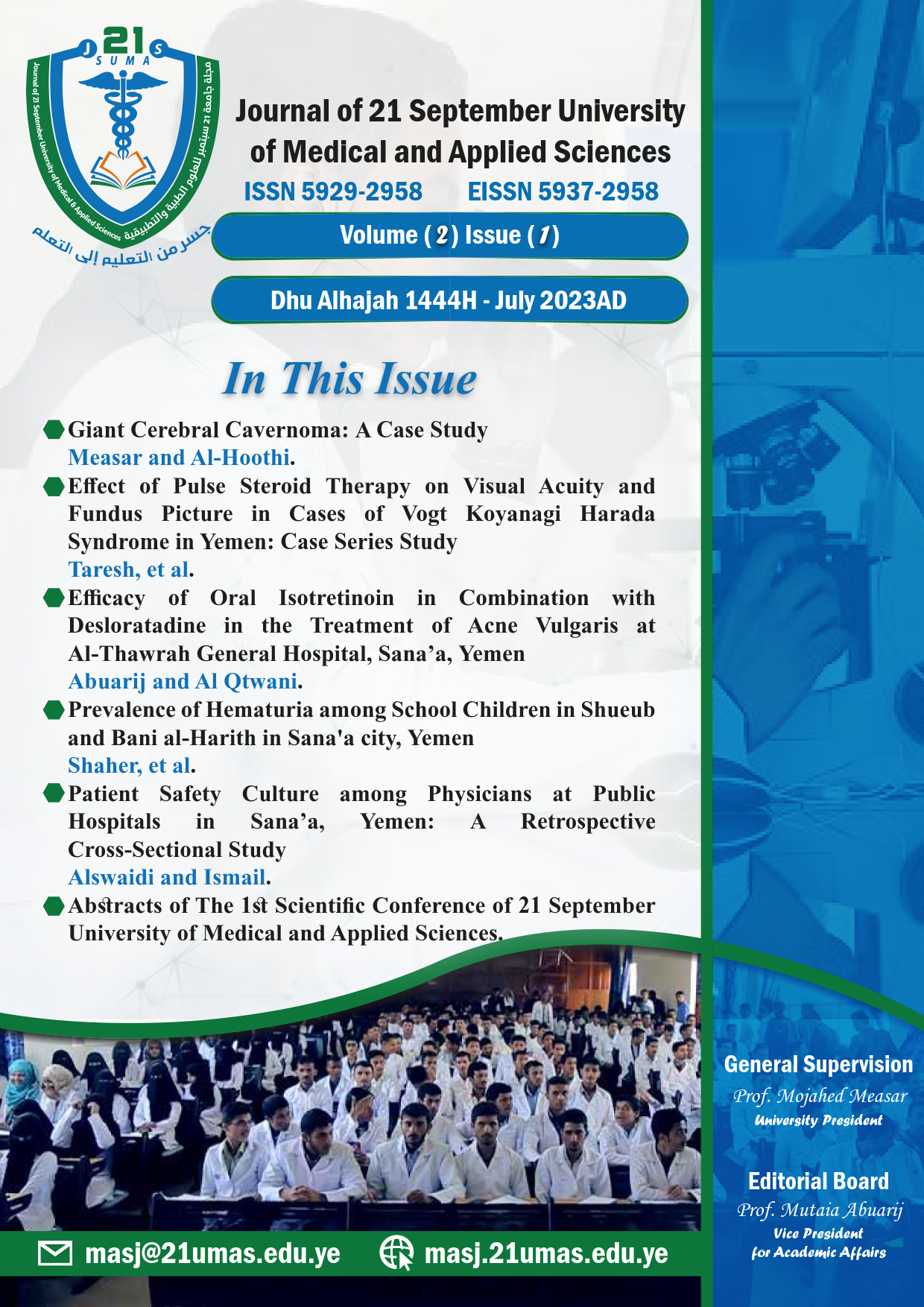Giant Cerebral Cavernoma: A Case Study
Abstract
Background: Cavernoma is known as cavernous malformation or cavernous angioma. It accounts for 0.5% of brain mass lesions. Giant cavernomas of the central nervous system is quite rare, only 65 cases of cerebral giant cavernous angioma have been included in literature over the last 62 years. They are more common in children and may be misdiagnosed as other intracranial neoplasms. This study presented a very rare giant cavernoma extended from right basal ganglia to the sylvian fissure in a 7-year-old female.
Case description: A 7-year-old female presented with the new onset of recurrent attacks of seizures, with progressive left-sided hemiplegia for the last month. The clinical examination showed that the patient was sleepy and had left-sided hemiplegia. A non-contrast CT scan revealed a spherical slightly hyperdense intraaxial lesion at the right basal ganglia extended to the sylvian fissure measuring 5x4.5x5 cm surrounded by moderate perifocal edema. A brain CT scan, with contrast, revealed slight patchy enhancement. MRI revealed a single large lesion occupying the right basal ganglia extended to the sylvian fissure measuring 5x4.5x5 cm and showed a patchy enhancement. The patient underwent craniotomy through the right fronto-temporal and transsylvian approach, under surgical microscope, with total en bloc resection of lesion. The histopathologic examination revealed cavernous hemangioma (cavernoma). After surgery, she was conscious alert, with no new neurological deficit apart from the pre operation Left-sided hemiplegia. The postoperative follow-up was uneventful with a significant improvement in her left-sided hemiplegia after 3 months.
Conclusion: Pediatric giant cavernous angioma is a rare intracranial lesion that may be best diagnosed with MR/CT, but sometimes, confirmation requires histopathological examination. It should always be included in the differential diagnosis of spontaneous intracerebral hemorrhages or large tumor. The best outcomes correlate with surgical excision, but may be, limited by eloquent tumor location.
In our case, we report a rare case of giant cavernoma that was completely removed by microsurgical treatment. This case provides important points for the practicing neurosurgeon to consider when making a differential diagnosis of large intracranial tumors. Since imaging appearance of giant cavernoma is variable, the possibility of cavernoma should be considered in the case of a large tumor.
Downloads
Published
How to Cite
Issue
Section
License
Copyright (c) 2023 Journal of 21 September University of medical and applied sciences

This work is licensed under a Creative Commons Attribution-NonCommercial-NoDerivatives 4.0 International License.


